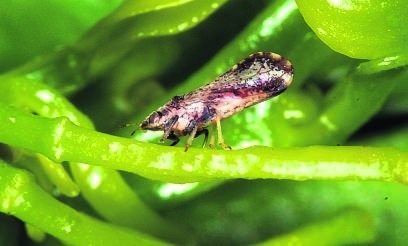After a year of research scientists have developed a potential cure for an orange-killing disease called citrus greening.
The research team looked at three biochemical elements: “phloretin, hexestrol and benzbromarone,” a University of Florida news release reported.
The team sprayed greenhouse tree shoots separately with one of the three biochemicals and were successful in stopping the bacteria’s spread, particularly with benzbromarone, which halted the bacteria in 80 percent of the infected trees’ shoots. They expect to begin field experiments with this treatment later this year. Their research was published in late April by the online open access journal PLOS Pathogens.
Gonzalez and Lorca are UF associate professors in the microbiology and cell science department, part of UF’s Institute of Food and Agricultural Sciences. The team also works under the auspices of the UF Genetics Institute.
The researchers found that benzbromarone targets a specific protein, known as LdtR, in the citrus greening bacterium. When benzbromarone binds to LdtR, it inactivates the protein, which disrupts a cell wall remodeling process critical for the greening bacterium’s survival inside a citrus tree.
“As a consequence of the chemical treatment, several genes were not expressed and the bacteria were not able to survive inside the phloem of the plant where osmotic pressure from sugar is high,” said Fernando Pagliai, a co-author of the study and a UF graduate assistant. Phloem is the living tissue that carries organic nutrients to all parts of the plant.
Benzbromarone is typically used to treat gout in humans.
Citrus greening first enters the tree via a tiny bug, the Asian citrus psyllid, which sucks on leaf sap and leaves behind bacteria. The bacteria then move through the tree via the phloem. The disease starves the tree of nutrients, damages its roots and the tree produces fruits that are green and misshapen, unsuitable for sale as fresh fruit or for juice. Most infected trees die within a few years.
The disease has already affected millions of citrus trees in North America and could wipe out the industry in the next decade if a viable treatment is not found.
UF/IFAS researchers have attempted everything from trying to eradicate the psyllid to breeding citrus rootstock that shows better greening resistance. Current methods to control the spread of citrus greening include removing and destroying infected trees.
Florida growers say they desperate for a treatment that will work.
“Every grower I know is just hanging by their fingernails, hoping and praying for a new discovery for treatment,” said Ellis Hunt Jr. of Lake Wales, whose family has been in the citrus business since 1922.
Industry experts, though, say it could be five to seven years before a new active-ingredient product could be commercially available because of the amount of time field testing takes and government regulations.
Jackie Burns, director of the UF/IFAS Citrus Research and Education Center in Lake Alfred, said because of those regulations, which are meant to ensure a safe food supply, researchers can’t accelerate testing and approval. And she noted that although the initial results of the research are promising, there is no guarantee the compounds will work under field conditions.
Agencies/Canadajournal

 Canada Journal – News of the World Articles and videos to bring you the biggest Canadian news stories from across the country every day
Canada Journal – News of the World Articles and videos to bring you the biggest Canadian news stories from across the country every day

